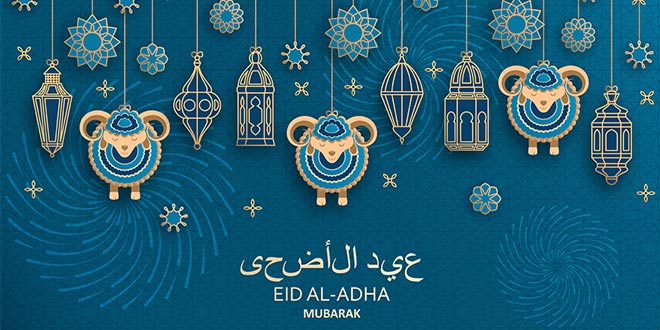In this Article
Festivals are the soul of every culture. They teach us togetherness, encourage us to carry out acts of kindness, and they’ve helped keep traditions alive through generations. They are about meeting loved ones and celebrating a joyous occasion to the heart’s content. However, as much as we need to have our share of fun, we must also know the reason why festivals are celebrated. Learning about different cultures and sharing knowledge will help instil the right values in both kids and adults alike. In this article, we share some significant information about Eid al-Adha that can help your kids feel connected to their roots or introduce them to another rich culture in the world.
The Story of Eid al-Adha
Eid al-Adha is celebrated to commemorate Abraham’s (PBUH), devotion to Allah. It signifies the huge sacrifice he was willing to make to show his love for God. As mentioned in the Holy Quran, Abraham had multiple dreams of sacrificing his son, Ismail (PBUH), and knew it was a command from Allah to him. When he told his son about his dream, the son asked his father to obey God’s command.
Later, when Abraham (PBUH) and his family were preparing to sacrifice Ismail’s life to obey God’s commands and to honour Abraham, Allah sent a lamb from Heaven to be slaughtered instead of Ismail. This Eid, therefore, also celebrates the survival of Ismail.
Lessons to Learn from Eid al-Adha
Eid al-Adha teaches us the true meaning of faith, togetherness, and harmony. It teaches us to obey Allah no matter how hard the commands may seem, and God will reward us in the most merciful of ways. On this auspicious occasion, it is customary for Muslims to sacrifice lamb and to meet up, enjoy scrumptious lamb meals together, exchange gifts, and spend time with their loved ones. Children usually wear new clothes and receive a traditional Eidiya or an allowance of money from friends and family that they can buy anything they wish with. It is also a great opportunity for people from different backgrounds and religious beliefs to come together and learn the culture and traditions of Islam.
Difference Between Eid al-Fitr and Eid al-Adha
Eid al-Fitr is the feast of breaking the fast. It marks the end of the Holy month of Ramadan, and falls on the first day of Shawwal, the tenth month of the lunar-based Islamic calendar. Eid al-Adha is celebrated on the tenth day of Thu al-Hijjah, the twelfth month of the Islamic calendar. People celebrate both these festivals in almost the same way – they meet and greet family and friends, exchange gifts and sweets, and arrange delicious feasts. It is also a time of giving to the less fortunate and to remember all the blessings Allah has bestowed upon us. However, there is no sacrifice made on the day of Eid al-Fitr.
Practices That Make Eid al-Adha Significant
Traditionally, the most significant practices of this festival involve the early morning congregational prayers at mosques, and the symbolic sacrifice of the lamb. The meat of the sacrificed animal is divided into three parts. One-third of the meat is shared with friends, relatives, and neighbours; one-third is given to the poor, and the family carrying out the tradition retains the last third of the meat.
This sacrifice is believed to be a reminder of the real sacrifice required, such as letting go of pride, ego, greed, animosity, etc. It is also believed that the sacrifice should give rise to deep spiritual feelings and urge one and all to give up wrong intentions and habits for the love of the Allah. According to the Quran, the flesh and the blood of the sacrificed animal do not reach God; what reaches him is one’s devotion. Thus, understanding the spirit behind the ritual and adhering to it are greatly encouraged.
They say festivals are like maps charting our spiritual journey that will ultimately bring us closer to God. To instil the right ideas about any culture, children need to be told and taught the true meaning of these festivals. It will help them become valued members of their communities, and society at large.









